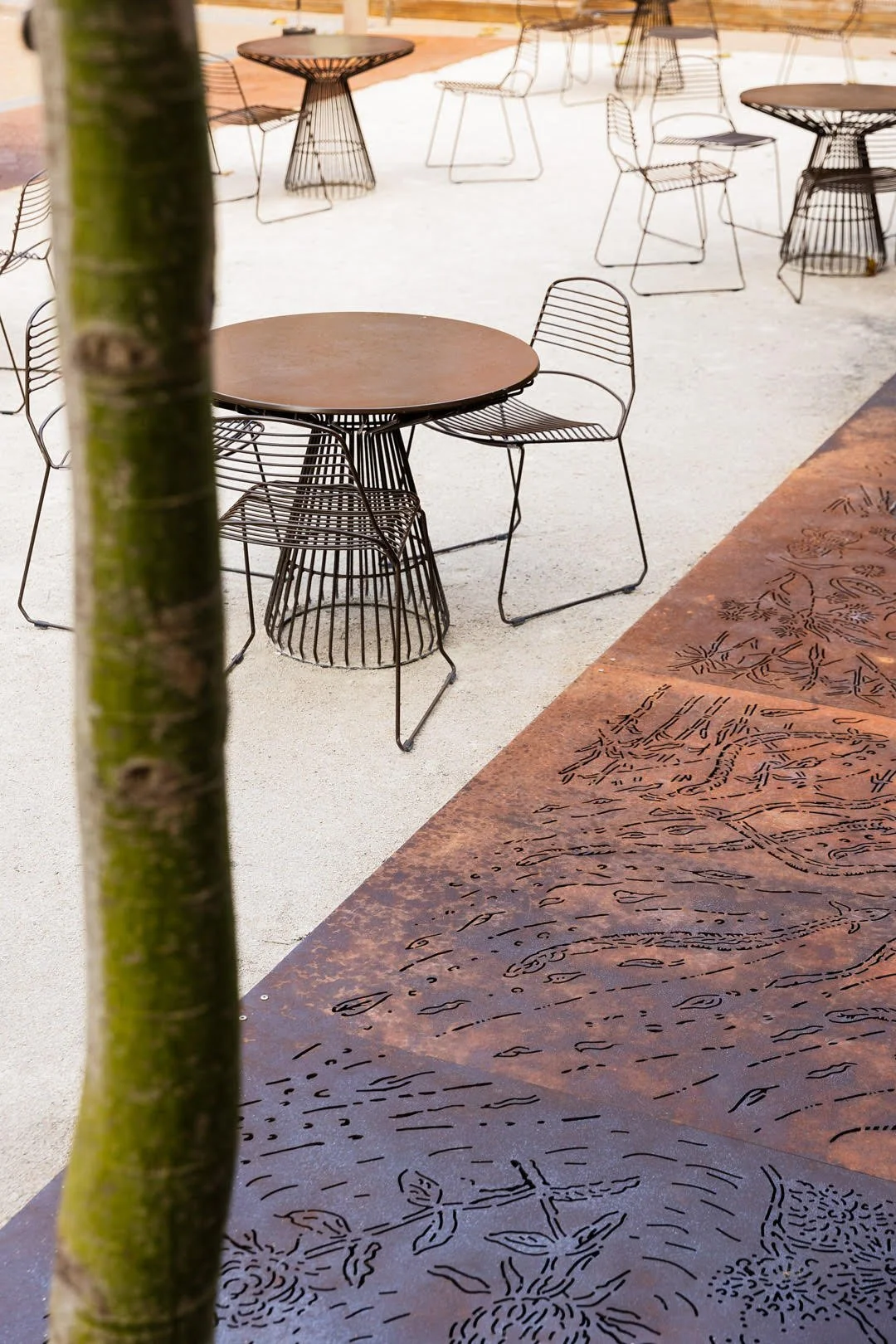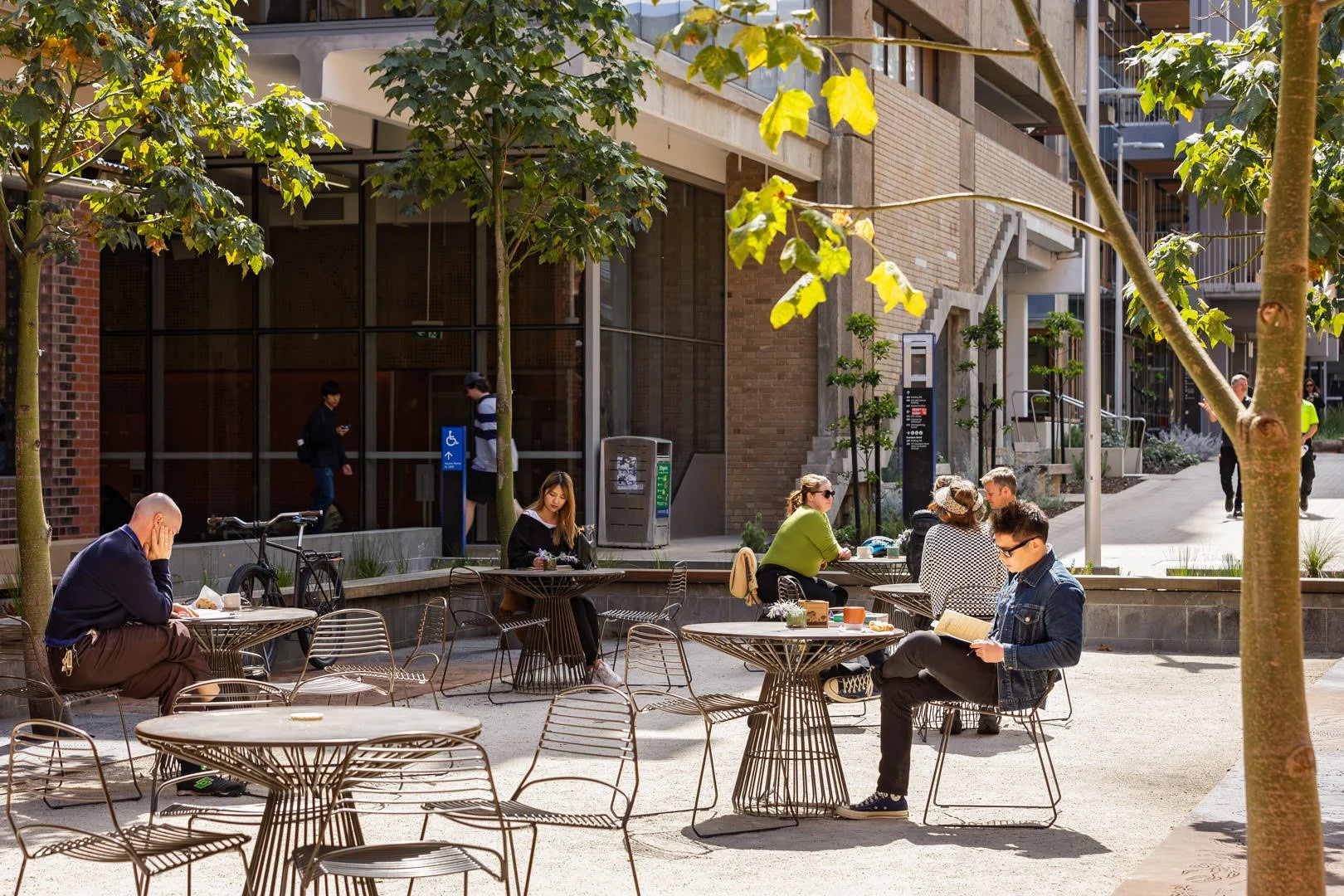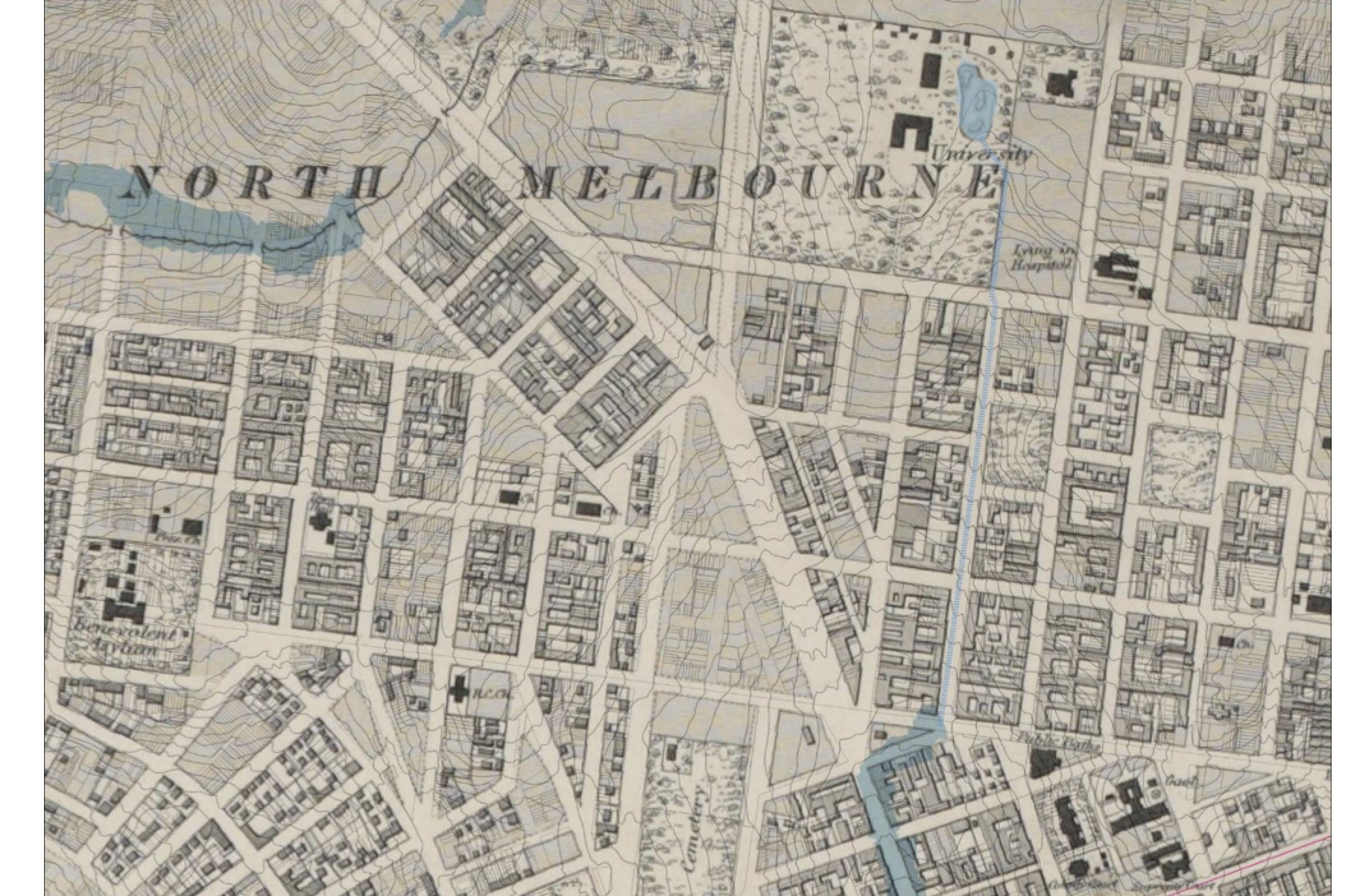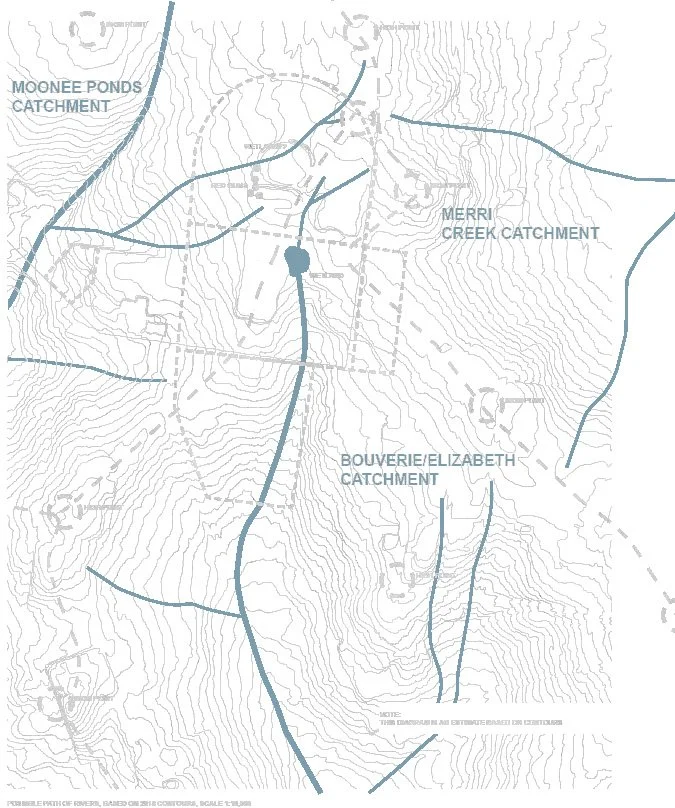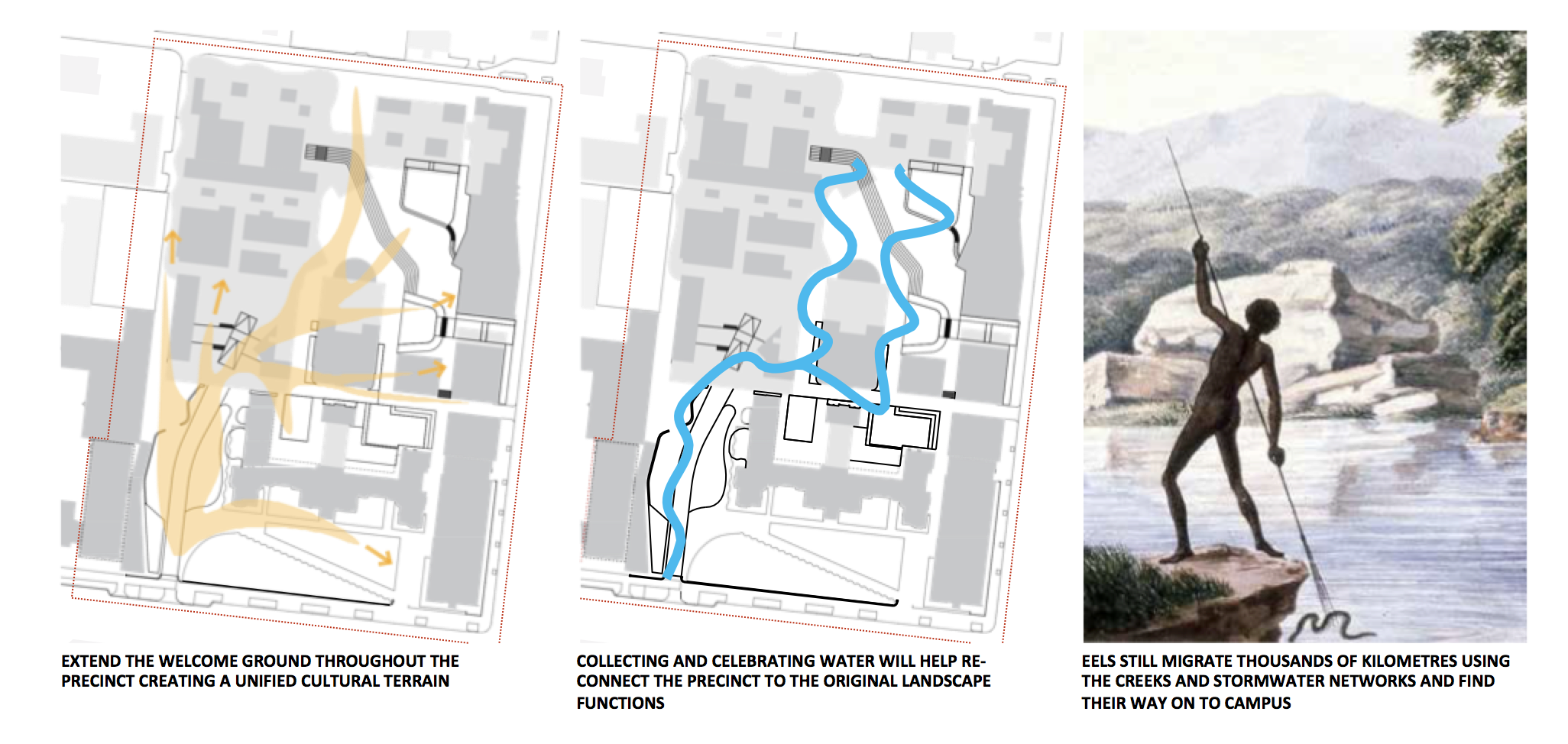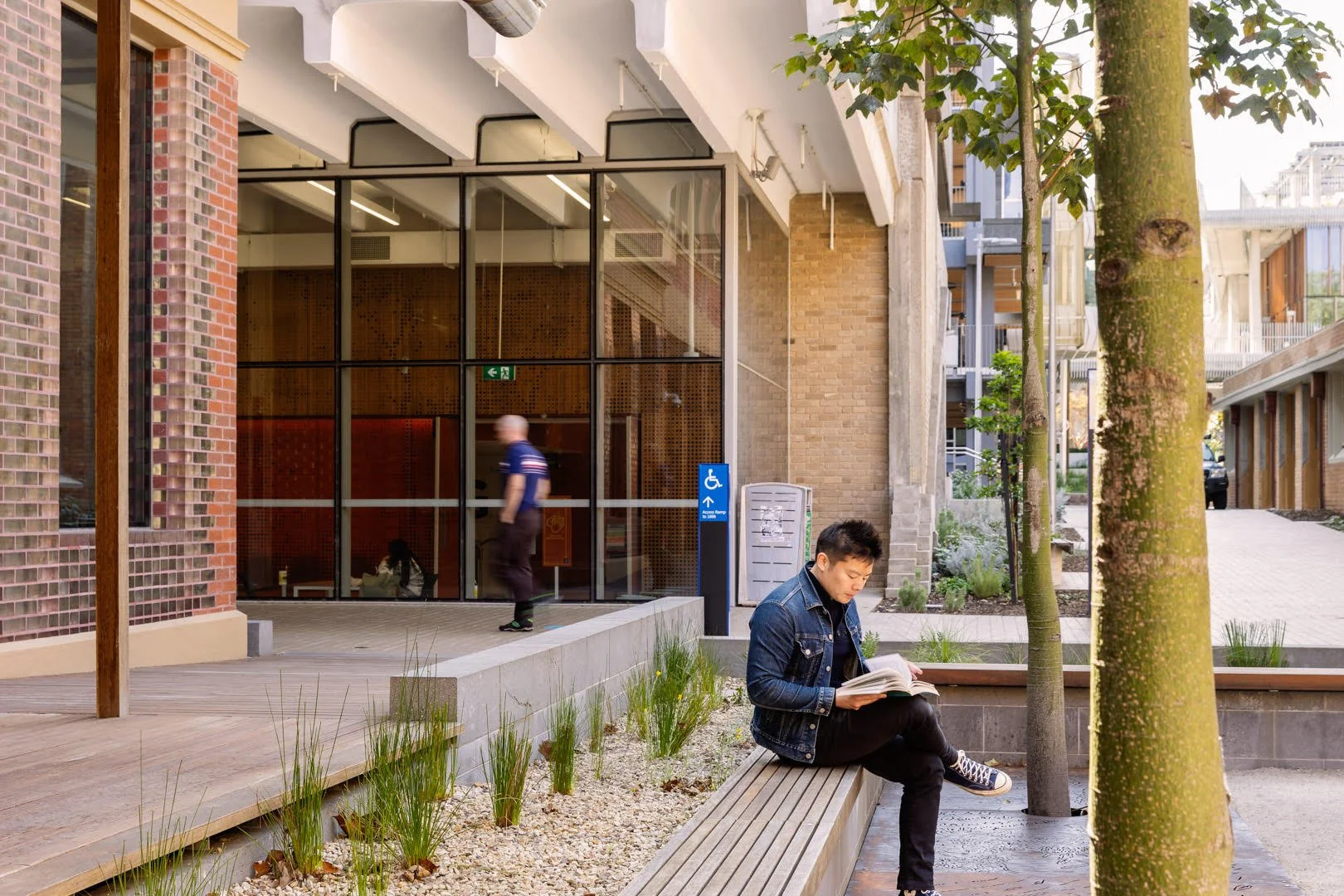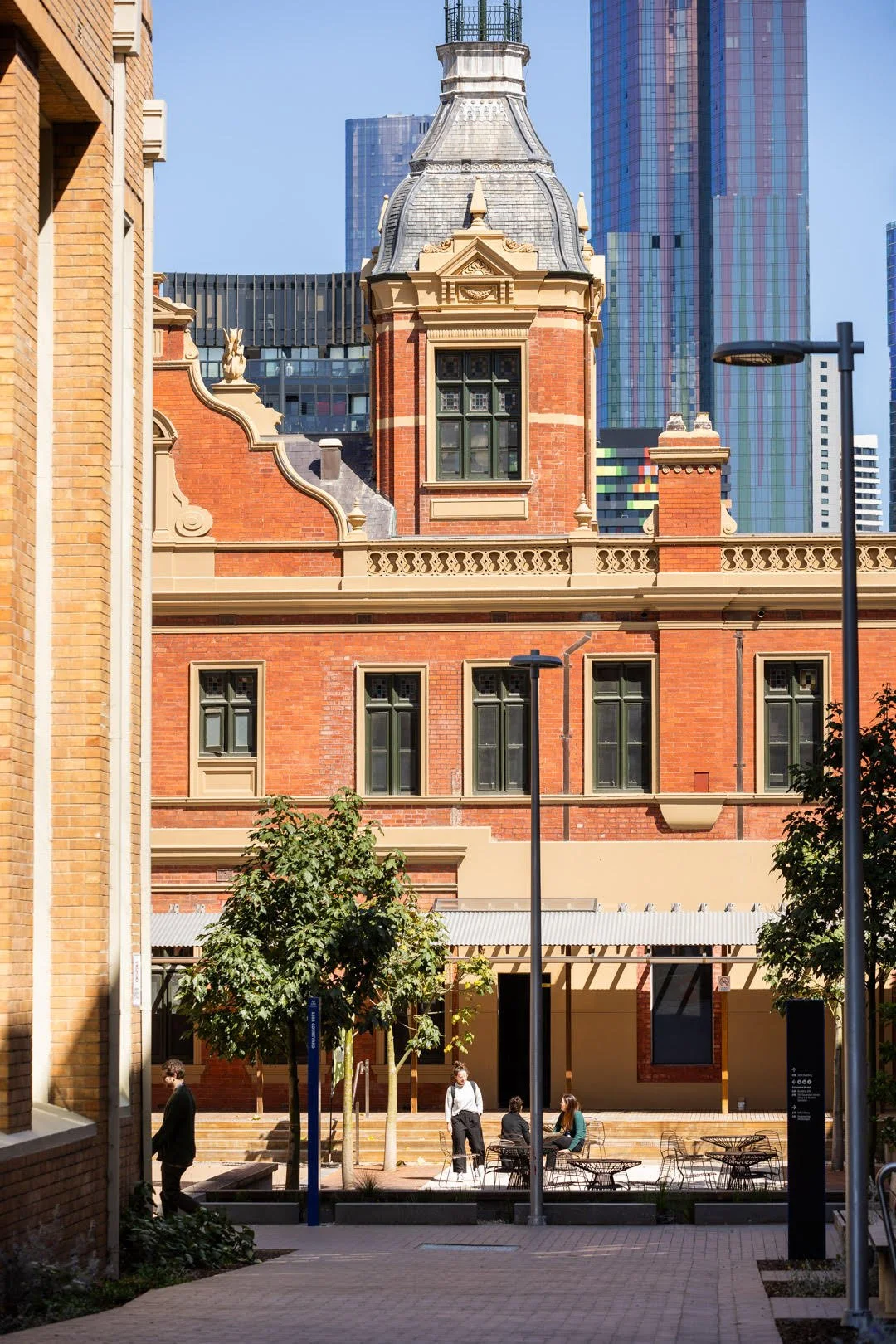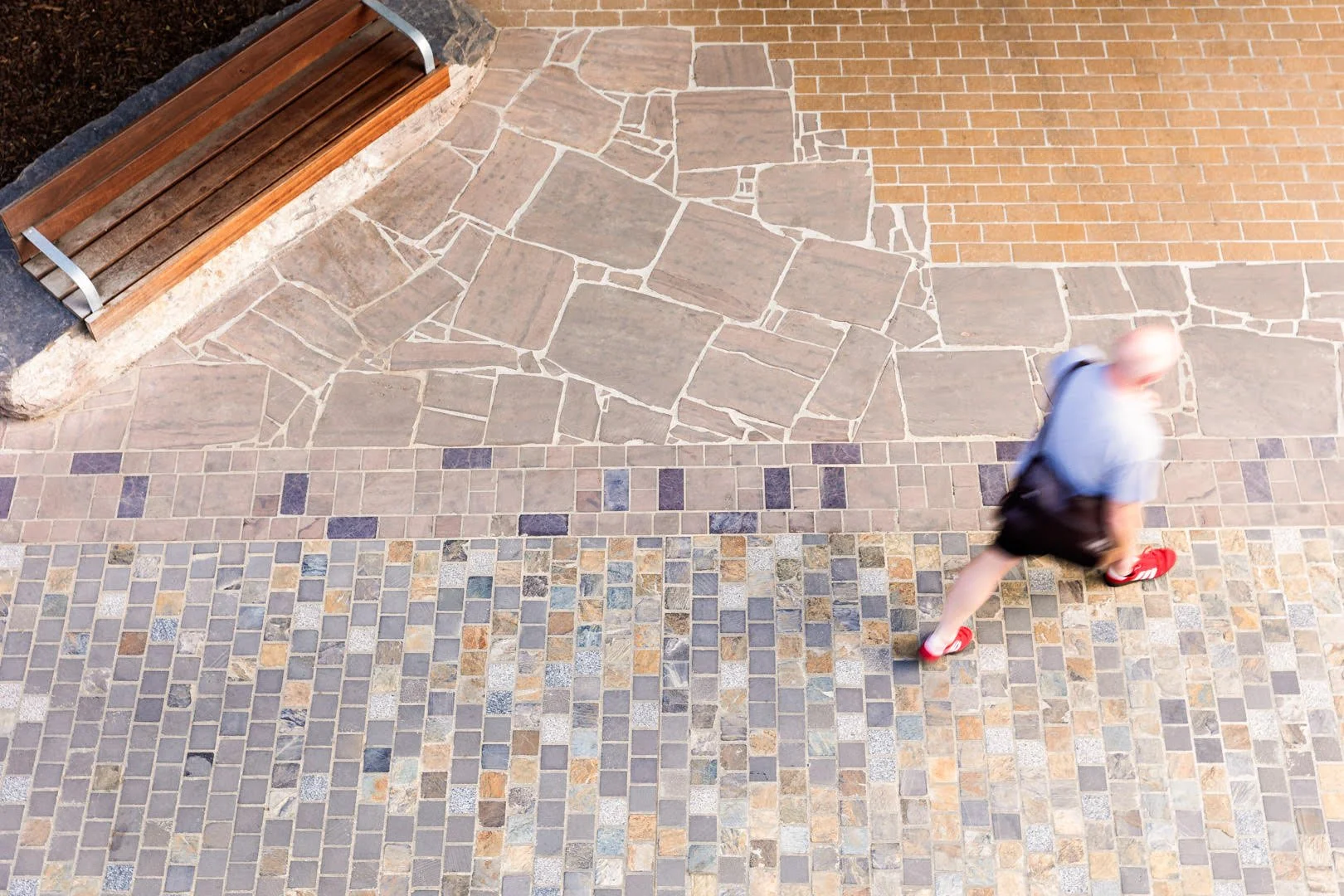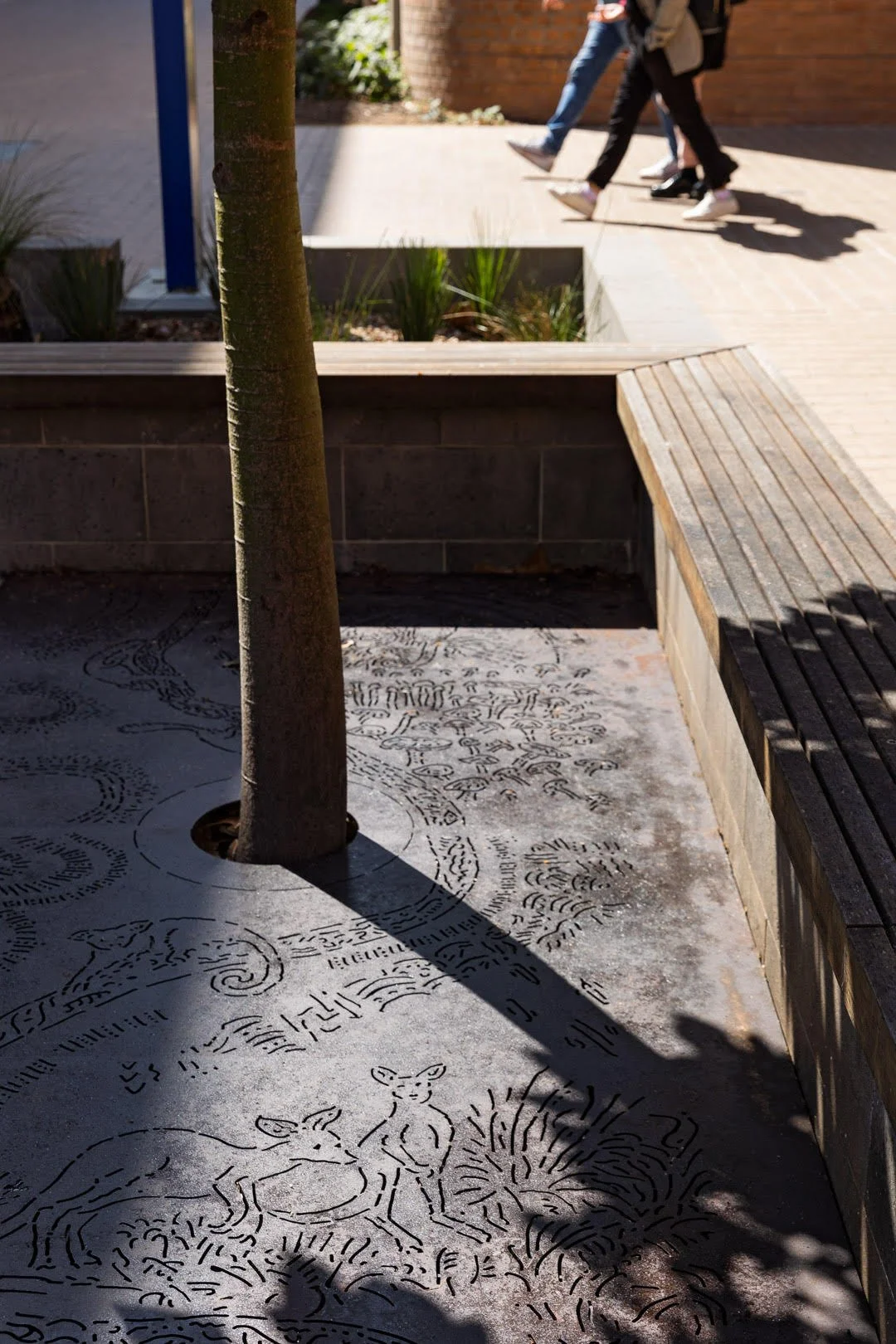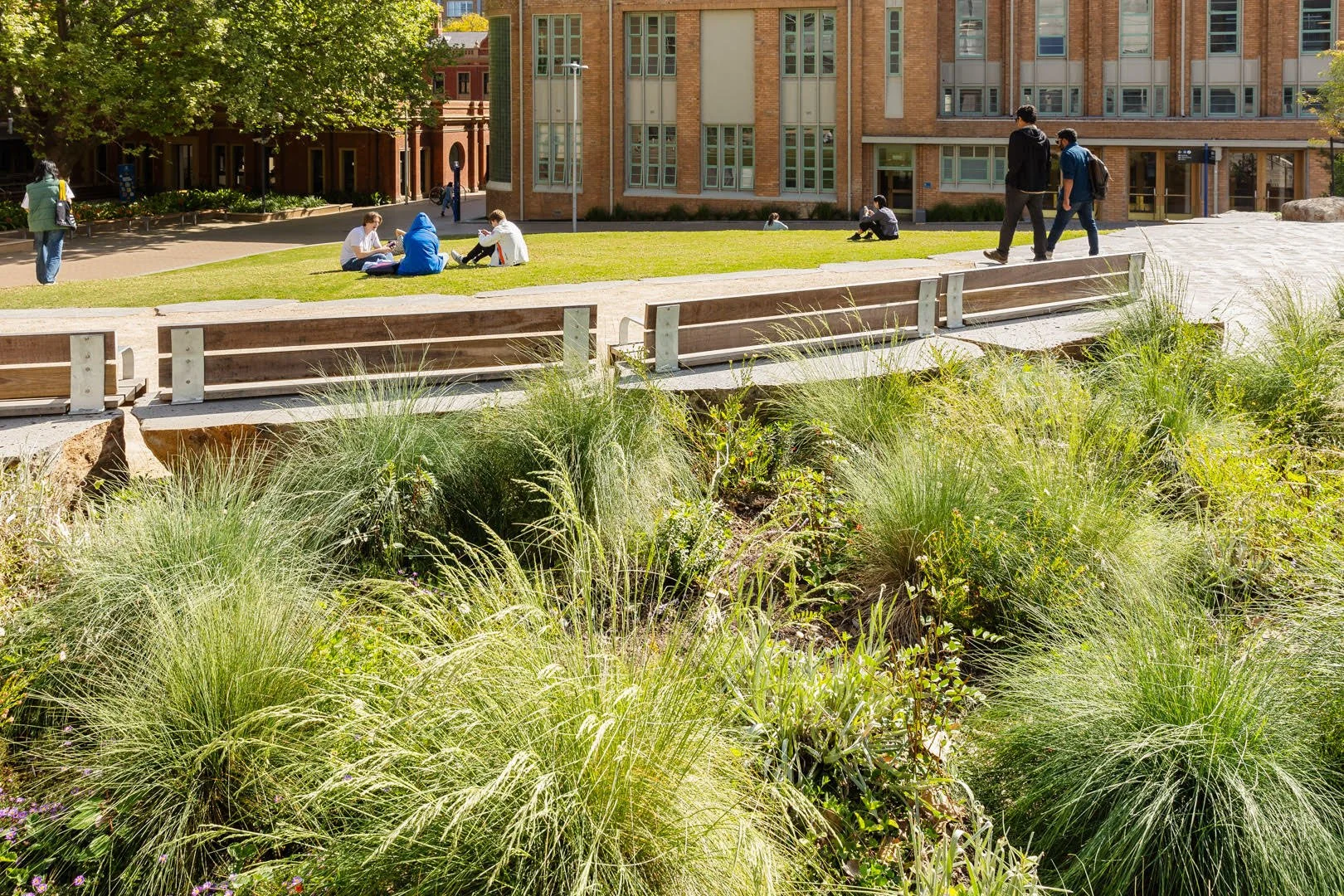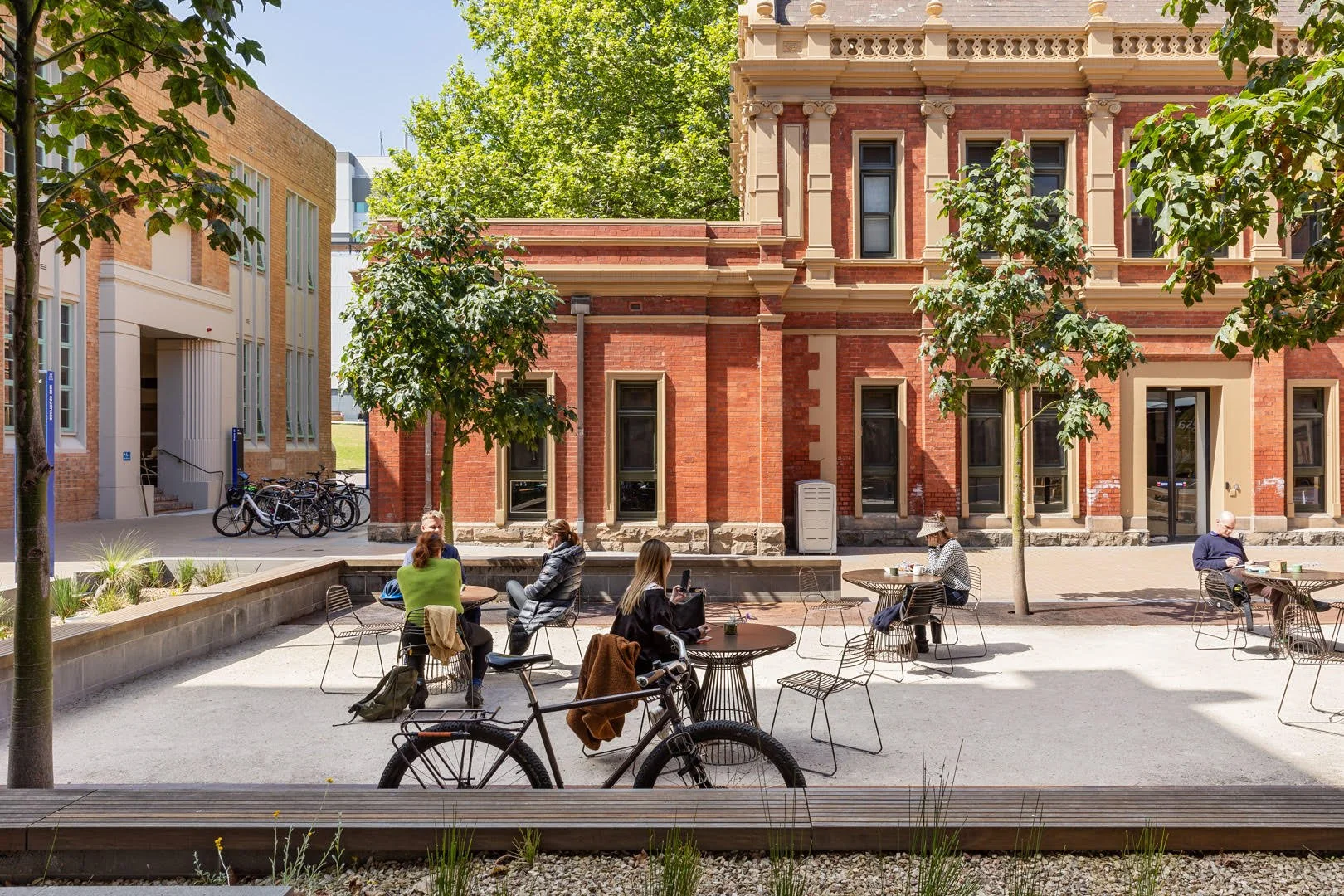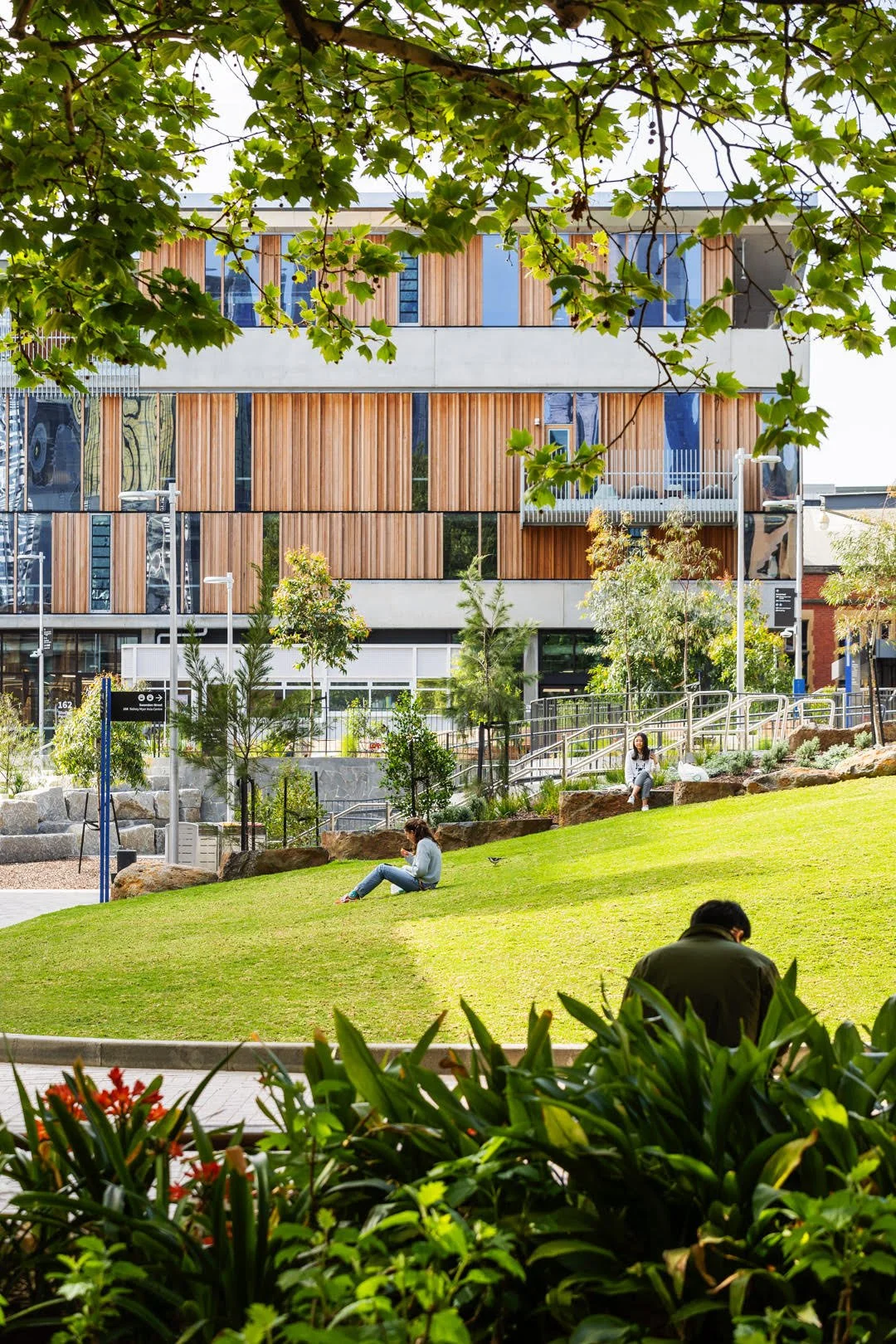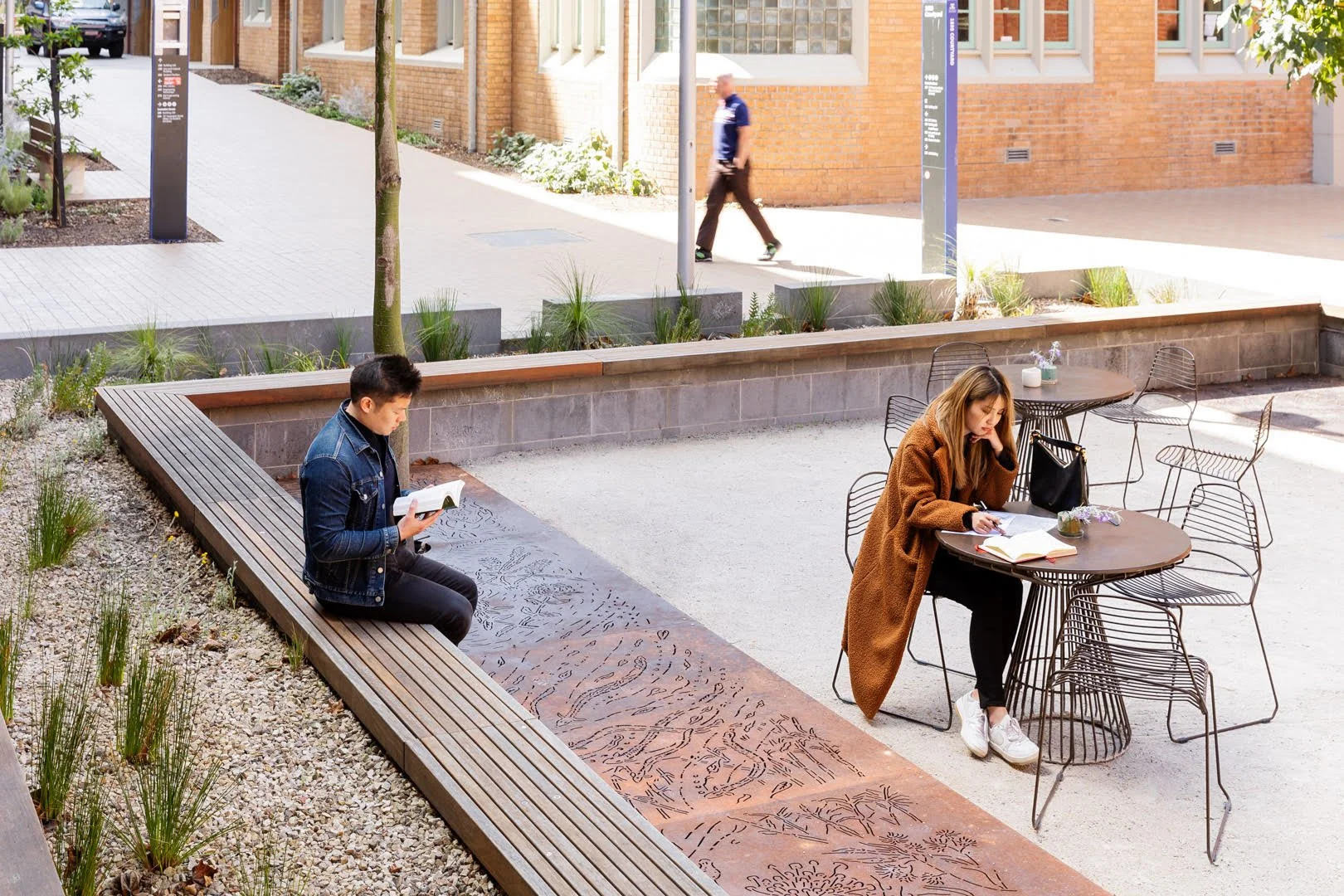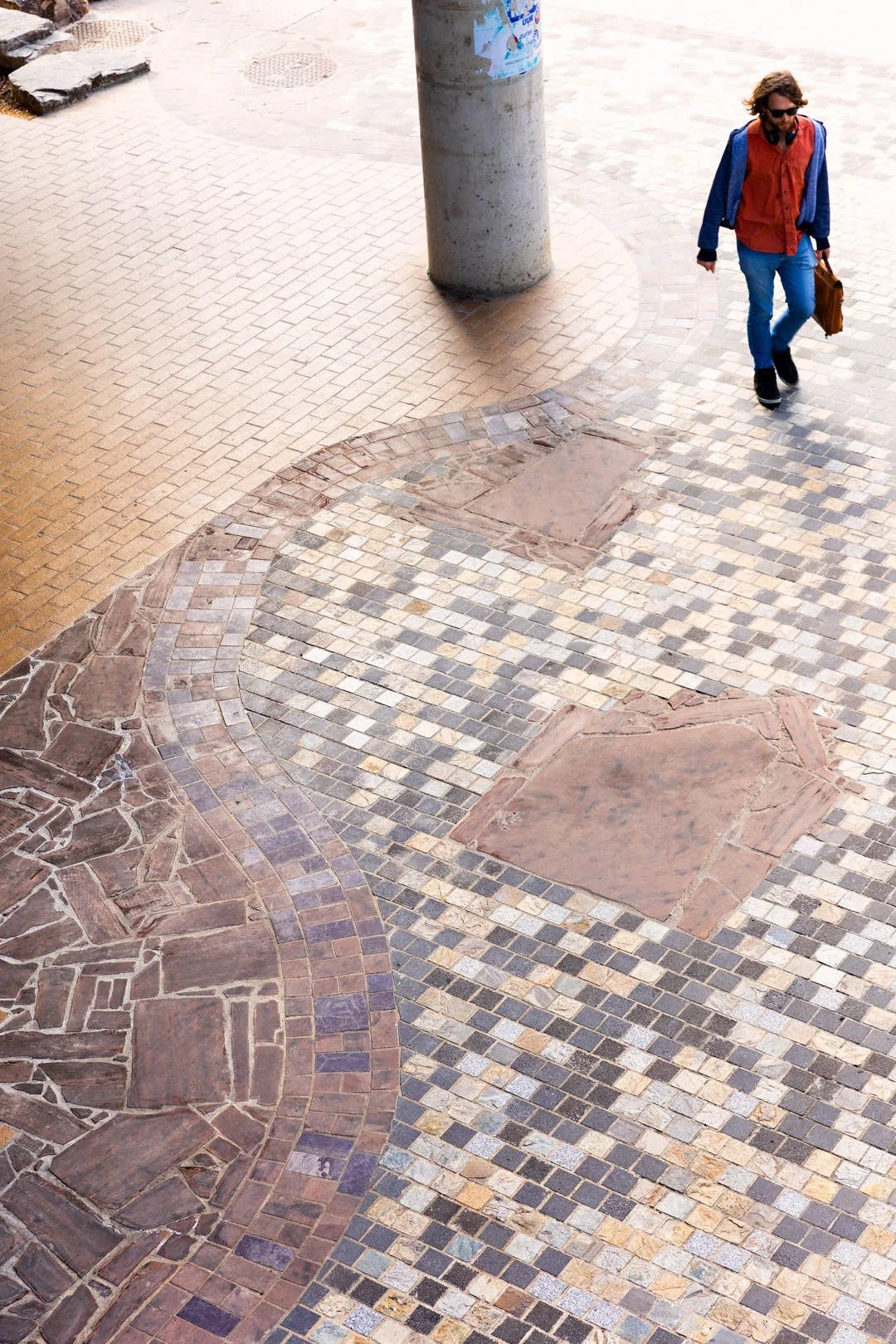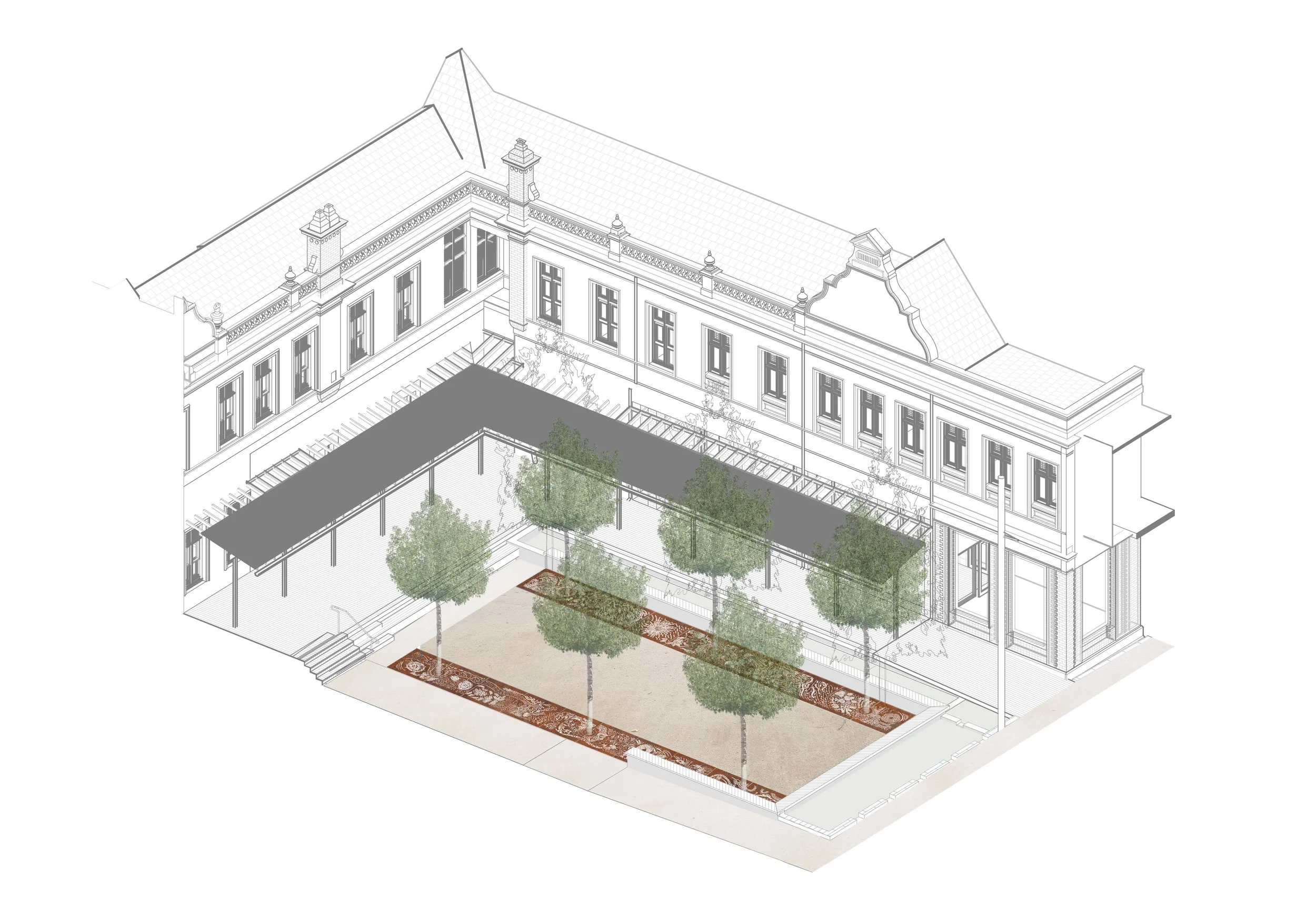University of Melbourne New Student Precinct
GLAS was involved as part of a large design consortium led by LYONS Architects to design the new social and student services hub for the University’s Parkville campus including 7 new buildings and 12,000m2 of new landscape. GLAS and ASPECT Landscape Architects collaborated on the concept design of the space bringing our complimentary voices and skills to ensure a strong landscape narrative. The student community were co-creators with over 20,000 students and staff actively contributing their views to the design. A comprehensive Indigenous engagement process was run by Greenshoots Consulting. Over 130 stakeholders representing 45 different First Nations language groups were consulted to ensure that the design of the New Student Precinct was informed by First Nations voices. The result is ‘Reconciliation at Scale’ and is tangibly activated within the fabric of the landscape spaces within the Precinct. Within the areas that GLAS has designed the ‘Welcome Terrain’ paving and the 7 seasons tree grate artwork are outcomes of the strong engagement process.
Student feedback led toward a design focused on the student experience, creating a diverse social place with a strong emphasis on landscape environmental performance, biodiversity, and activation. The key design move was the re-discovery of the ground. Removing all the decked structures from before to allow the ground to be revealed. A new paving ‘The Welcome Terrain’ was developed as the key connecting and wayfinding device of the precinct. The design includes a new central amphitheatre, entry gateway, and lawn, the design for a new entry space to the Parkville campus from Grattan Street featuring a restored creek within a contemporary indigenous landscape, a new social courtyard and a series of laneways and balcony landscapes. Value for money was achieved through the complete transformation of the space into a world class student-centric precinct that puts the University of Melbourne on the world map.
Innovation was achieved through the vision of revealing the ground and the natural systems, highlighting the Bouverie creek which formerly ran through the campus.
Traditional Custodians
Wurundjeri Woi Wurrung
Location
Parkville, VIC
Scale
12,000 sqm
Year
2019-2023
Client
University of Melbourne
Team
Aspect Studios
Lyons
Eizenberg Architecture
NMBW Architecture Studio
Greenaway
Greenshoot
Architects EAT
Awards
2024 AILA National Award, Civic Landscape
2023 Australian Institute of Architects Victoria Awards – Victorian Architecture Medal
2023 Good Design Awards Australia Gold Winner for Architectural Design
2024 AILA Victoria Landscape Architecture Award - Civic Landscape
2023 Victorian Architecture Awards
2023 The Henry Bastow Award for Educational Architecture
2023 Heritage Architecture Award for Creative Adaptation
2023 The Joseph Reed Award for Urban Design
Featured
Architecutre, Au, University of Melbourne Student Precinct Project, by Rachel Hurst (2023)
Landscape Australia, The University of Melbourne Student Precinct, by Jocelyn Chiew (2024)
West Courtyard: Includes a central seating area flanked by rain gardens and tree grates
(Original Map of Hobson Bay and Yarra River leading to Melbourne, 1864)
Approximate route of Bouverie Creek based on 2018 contours
Parkville’s lost creek
The water narrative of the Student Precinct highlights the rediscovery of the lost Bouverie Creek, symbolizing a connection to Country and Indigenous knowledge. By bringing water to the surface and incorporating local materials like mudstone and Victorian stone, the design reflects the eel migration within the stormwater system, blending cultural storytelling with an integrated water strategy. This approach not only reveals Indigenous narratives but also reclaims the landscape as a vital public space, reconnecting the campus with its natural and historical context.
The artwork ‘Seasons and the Cycle of Nature’ depicts the six Wurundjeri seasons designed by Dr Ngardarb Francine Riches, a Bardi/Jawi and Karajarri woman from the West Kimberley Coast, and was developed by the artist in conversation with Uncle Norman Terrick, a Wurundjeri Elder. Digitised by GLAS, stencilled in Corten steel. Installation date March 2023.
1 – LATE SUMMER – late January to late March
FEATURING – KOOYANG (Eels) and Bushfires
Bushfire season, grass burning under the guidance of the elders to promote growth and to make it easier to find small animals, Wattle gum, Male eels had started to come earlier and later but this was the peak time for female short-finned eels to move downstream to the sea, dry streams, Banksia – Honeysuckle, Stringybark blossoms attracted the birds, mistletoe berries time.
2- EARLY SUMMER – mid November to late January
FEATURING – BALLAMBAR (Butterflies)
Wetland plants, tall grass time, birds feeding young, black wattle flowering, People gathered around billabongs, rivers and creeks to fish. Galaxias moved up from the sea. Eels started coming down river to the sea, fish traps were set, Kangaroos and Emus were caught, Speargrass, Common reed, Women were digging for roots, Flathead and flounder were speared in the bay, large gatherings of people.
3 – LATE SPRING – late August to mid-November
FEATURING –Tadpoles
Plenty of lilies, orchids and PETYAN wildflowers, Snakes and lizards, Joeys were out of their pouches, Kingfisher birds returned from the north, tadpoles.
5 – WINTER – June to late July
FEATURING – Chinnup (Cockatoos)
Freezing winds, rough seas, snow, echidna, birds nesting, people moved to find koalas, wombats and possums, People built bark huts (willam), fires to keep warm, Possum skin blankets.
4 – AUTUMN – late March to June
FEATURING – Brushtail and ringtail possum mating season
Sunrises, flocking birds, Eastern grey and wallabies, Feather tailed gliders, fungi, Eagle nesting, Gwangal Moronn (Honeybees)
6 – EARLY SPRING – late July to late August
FEATURING – Larnuek (nesting birds)
High rainfall, high rivers, Muyan – silver wattle (also known as Baraks wattle – He died in Aug 15 1903 in golden wattle full bloom), yellow box flowering, people came back from the highlands to the lowlands, ducks and other bird eggs.


